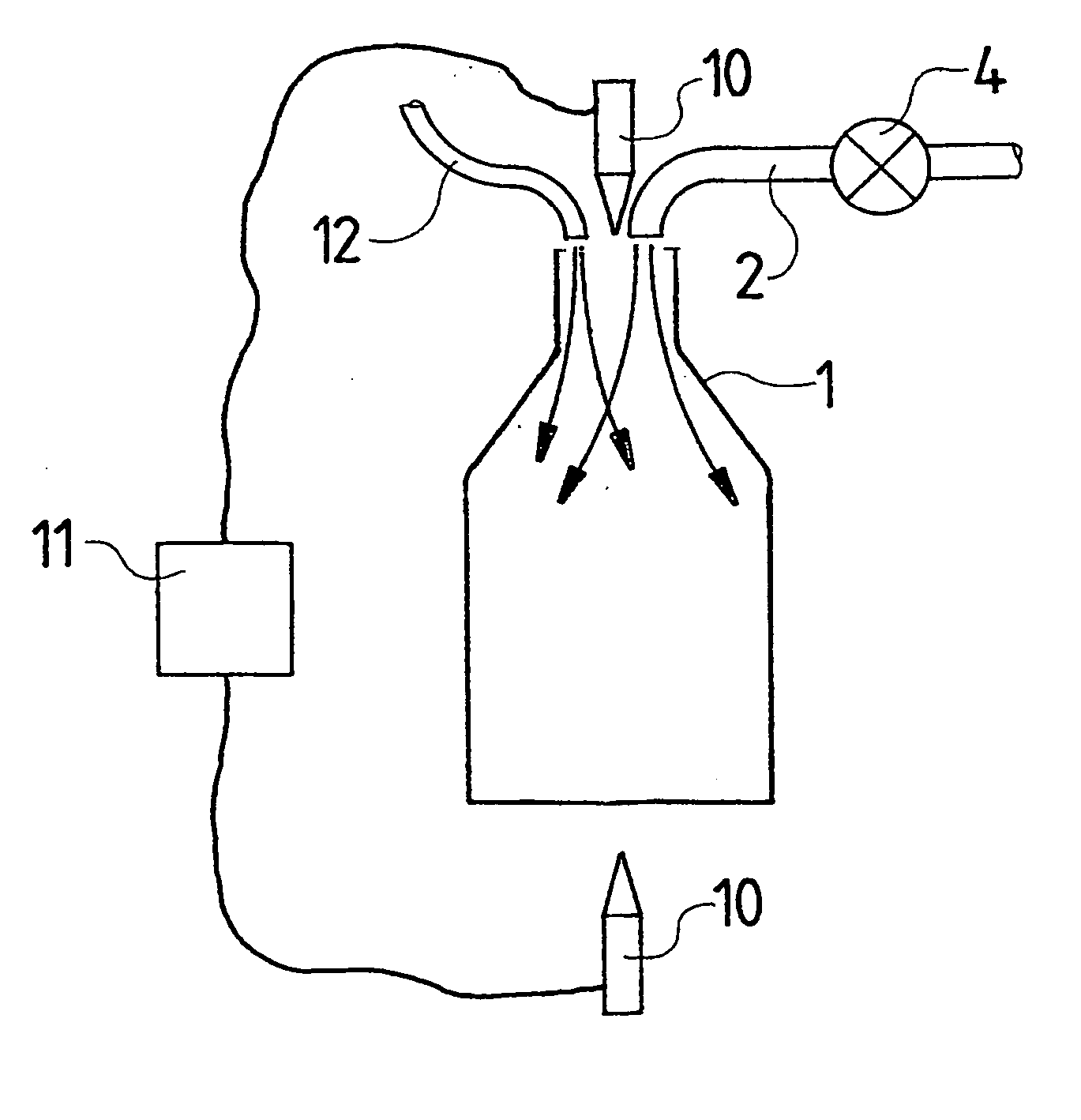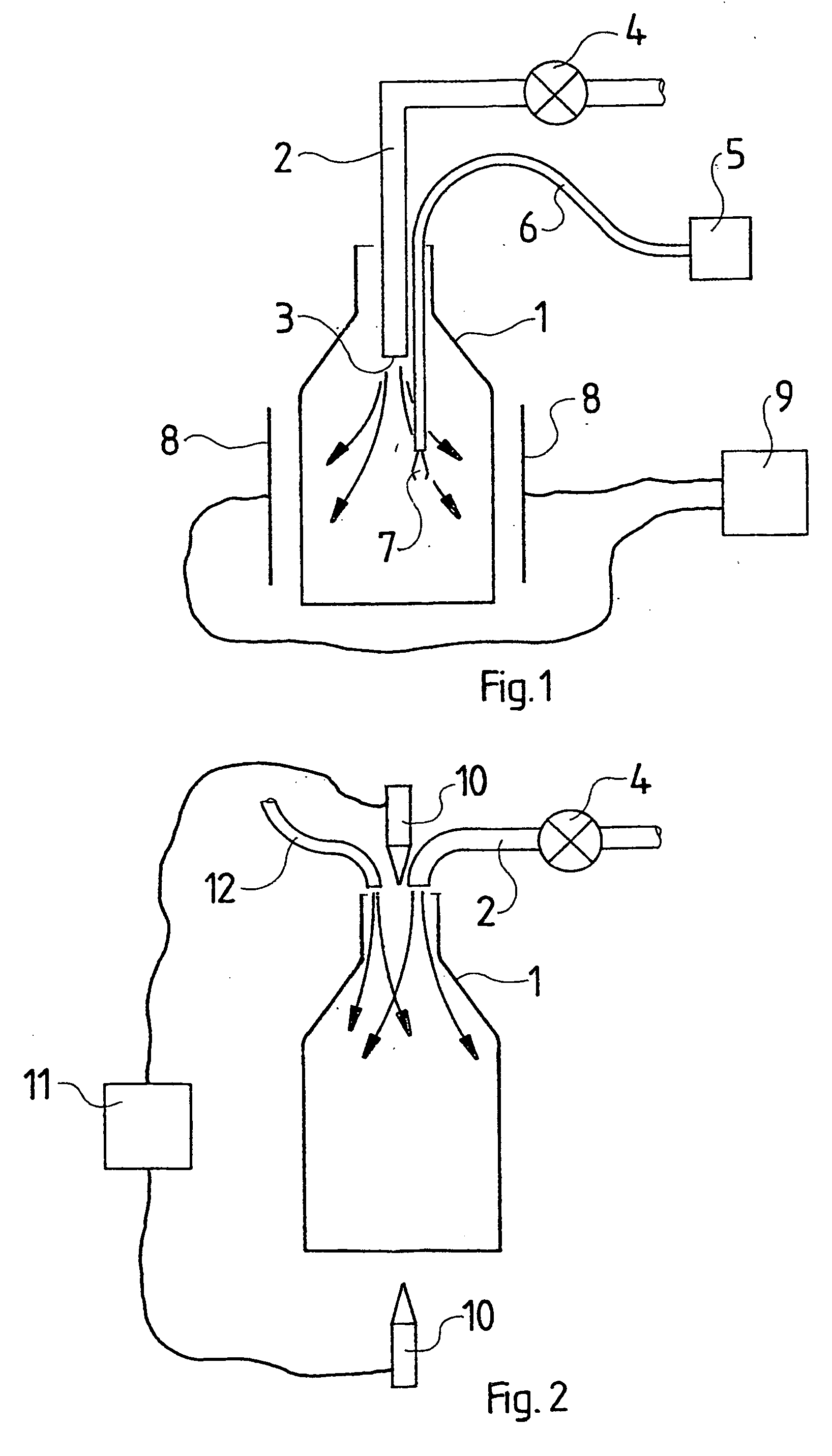Device for removing oxygen from beverage containers
- Summary
- Abstract
- Description
- Claims
- Application Information
AI Technical Summary
Benefits of technology
Problems solved by technology
Method used
Image
Examples
Embodiment Construction
[0022]FIG. 1 shows a container 1 mounted by omitted fasteners to the processing site of the device of the invention. Illustratively the container is a presently conventional PET plastic bottle.
[0023] The shown device includes a loading tube 2 of which the mouth 3 blows into the inside of the bottle 1. A material from an omitted supply can be blown through the loading tube 2 controlled by a valve 4 in the direction of the arrows into the bottle 1.
[0024] Appropriate materials must be oxidizable into an oxidation product safe with respect to foodstuffs. Appropriate materials illustratively are dusts, in particular fine carbon dust that oxidizes to CO2 which is innocuous for beverages. A number of gases, in particular H2 (hydrogen), CO (carbon monoxide) and CH4 (methane) are appropriate materials, which respectively oxidize into water, CO2, and water and CO2, that is, being wholly compatible with beverages. Furthermore oxidizable liquids in atomized form also may be used.
[0025] In th...
PUM
 Login to View More
Login to View More Abstract
Description
Claims
Application Information
 Login to View More
Login to View More - R&D
- Intellectual Property
- Life Sciences
- Materials
- Tech Scout
- Unparalleled Data Quality
- Higher Quality Content
- 60% Fewer Hallucinations
Browse by: Latest US Patents, China's latest patents, Technical Efficacy Thesaurus, Application Domain, Technology Topic, Popular Technical Reports.
© 2025 PatSnap. All rights reserved.Legal|Privacy policy|Modern Slavery Act Transparency Statement|Sitemap|About US| Contact US: help@patsnap.com


